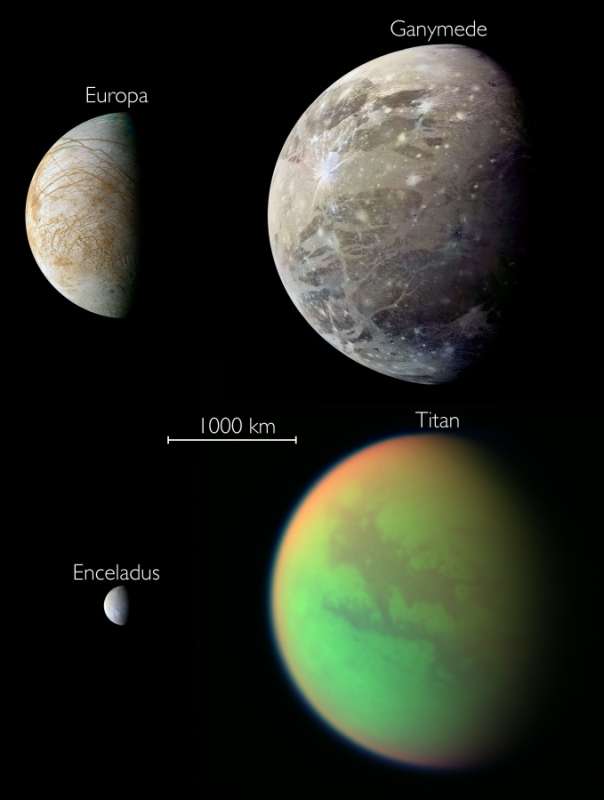 |
Астронет: Астрономическая картинка дня Потенциально обитаемые спутники http://variable-stars.ru/db/msg/1321813/eng |
Credit & Copyright: Research and compilation -
René Heller
(McMaster Univ.) et al.
Panels - NASA/JPL/Space Science Institute/Ted Stryk
Explanation:
For astrobiologists,
these may be the four most
tantalizing moons in our Solar System.
Shown at the same scale, their exploration by interplanetary
spacecraft has launched the idea that moons, not just
planets, could have environments supporting life.
The Galileo mission to Jupiter discovered
Europa's global subsurface ocean of liquid water
and indications of
Ganymede's
interior seas.
At Saturn, the Cassini probe detected erupting fountains of water ice
from Enceladus indicating warmer subsurface water on
even that small moon, while finding surface lakes
of frigid but still liquid hydrocarbons beneath the dense atmosphere
of large moon Titan.
Now looking beyond the Solar System,
new
research suggests that sizable exomoons,
could actually outnumber
exoplanets in stellar
habitable zones.
That would make moons the most common type of habitable world
in the Universe.
Panels - NASA/JPL/Space Science Institute/Ted Stryk
Authors & editors:
Robert Nemiroff
(MTU) &
Jerry Bonnell
(USRA)
NASA Web Site Statements, Warnings,
and Disclaimers
NASA Official: Jay Norris.
Specific
rights apply.
A service of:
LHEA at
NASA /
GSFC
& Michigan Tech. U.
